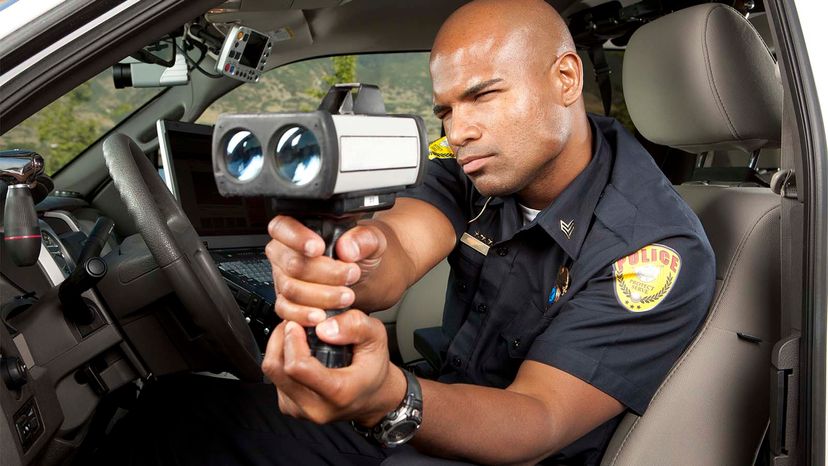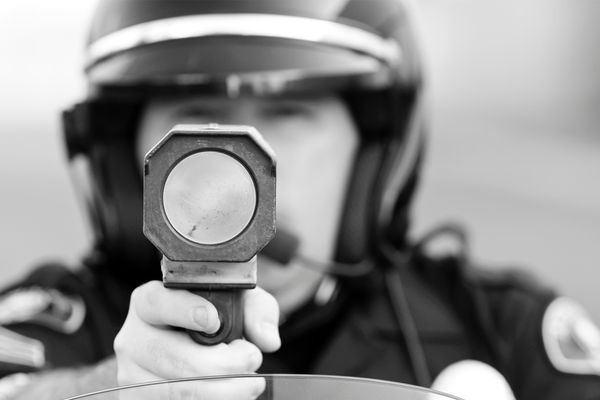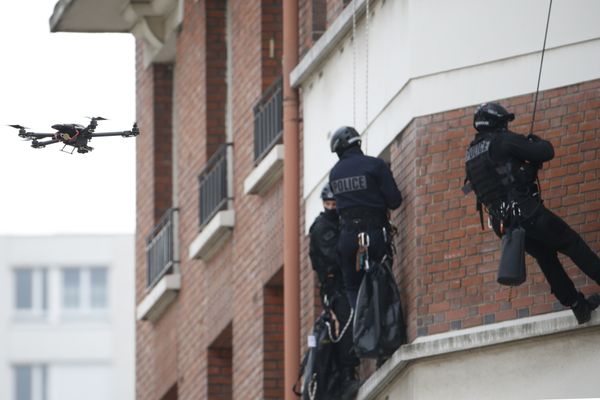
Here's the basic scenario that probably puts a chill down any driver's spine. You're cruising down some unfamiliar stretch of highway and you're not paying too much attention to your speedometer. The second after you pass a billboard, you notice that a police car is parked behind it, and the officer happens to have a radar gun pointed at you. The next thing you know, you're being waved over and instructed to provide your driver's license and vehicle registration. A few long minutes later, you drive off with an expensive speeding ticket tucked in your glove compartment.
Getting caught in a speed trap — loosely defined as a spot where law enforcement officers are lying in wait to catch and ticket drivers exceeding the limit — can be a frustrating experience. And it's probably not that uncommon. Getting pulled over for speeding is something that happens to nearly one in ten motorists each year, according to a survey released in 2013 by the National Highway Traffic Safety Administration. Those who were stopped say they received tickets 68 percent of the time, while 27 percent managed to get away with just a warning (another 5 percent didn't get either). And depending upon the location, those who get cited can feel some serious financial pain. In New York state, for example, a speeding ticket could end up costing you more than $1,000, according to the Governor's Traffic Safety Committee.
Advertisement
You might be thinking that this all seems unfair, and possibly illegal. How come police are able to conceal themselves and wait for unsuspecting speeders to fall into their snare? Isn't setting a speed trap a form of entrapment? After all, the two terms sound so similar.
Sorry to disappoint you, but don't ever try that argument in traffic court.
"A speed trap is not entrapment because an officer is not inviting, enticing nor encouraging a driver to commit the offense of speeding," explains Valdosta, Georgia-based attorney William Long Whitesell in an email. As Whitesell details further in this 2017 blog post, the police don't have any legal obligation to tell motorists where they are, and it's perfectly okay for them to conceal their presence in an effort to catch violators. To commit entrapment, they'd have to do something really outrageous — such as pull up alongside you in an unmarked vehicle, ask how fast your sports car can go and then challenge you to a race. (That's just a hypothetical example, Whitesell says.)
And that's not just true in Georgia. Other states use the same definition of entrapment. Pennsylvania judge Jessica Brewbaker offers a similar explanation of what entrapment actually means in this 2014 PennLive.com column.
While nobody likes to get stopped for speeding, it's not hard to understand the importance of enforcing speed limits. According to the National Highway Traffic Safety Administration, speeding was a factor in 27 percent of all fatal crashes in 2016, the most recent year for which data was available, and those accidents cost more than 10,000 people their lives.
That said, speed traps also have come under scrutiny in some places, where small towns have been accused of relying upon them as a money maker rather than to save lives. Garry Biller, president of the National Motorists Association, a Waunakee, Wisconsin-based advocacy group, explains that for decades, the convention in traffic engineering has been that speed limits should follow the 85th percentile rule. That means that the legal limit should be just a few miles per hour over the average speed of traffic on that particular stretch of road, which research has shown is the safest speed for drivers.
But that number isn't necessarily permanent, since traffic flow can evolve over time. If there hasn't been a recent traffic study, a situation can develop in which the posted speed limit actually is slower than the prevailing flow of traffic.
"When we find those in locations where there seems to be heavier law enforcement, that leads us to believe that the enforcement is more revenue-based," Biller says.
Advertisement


